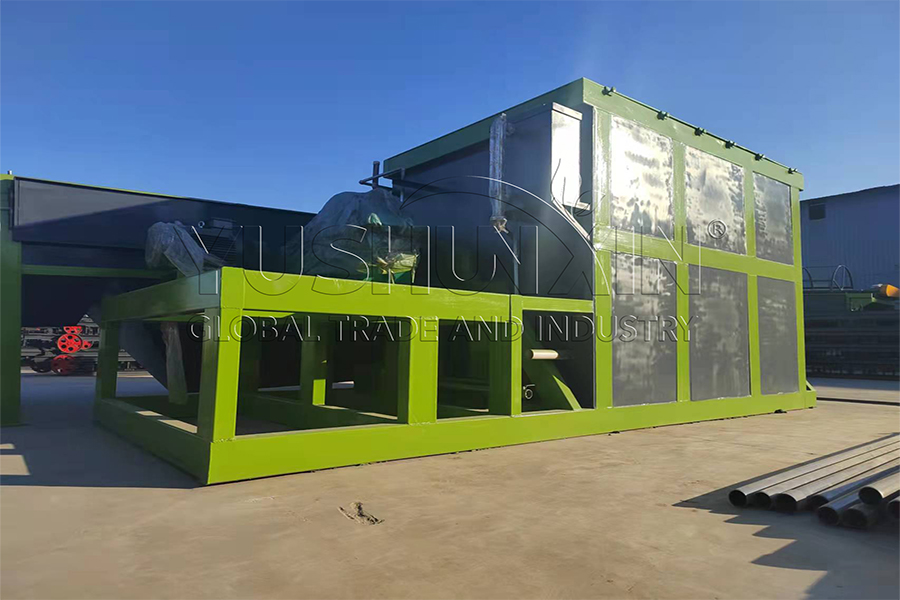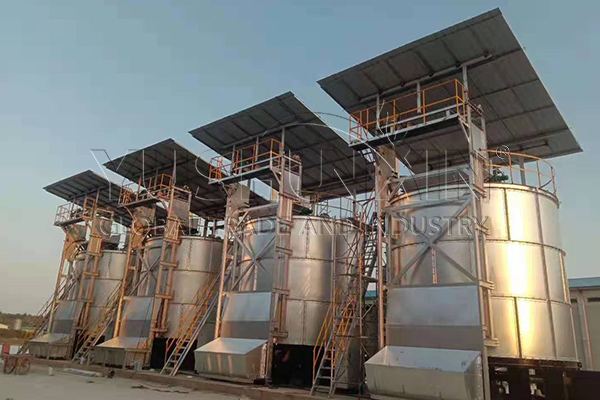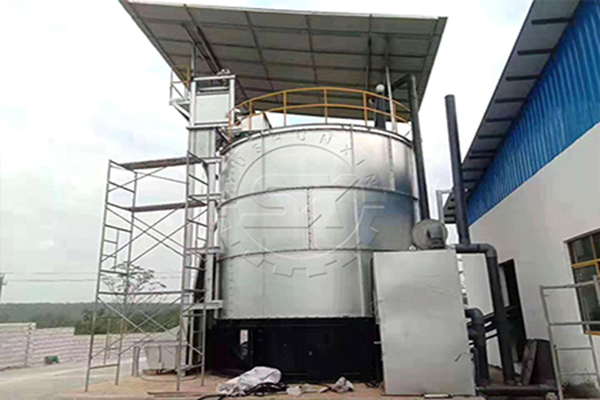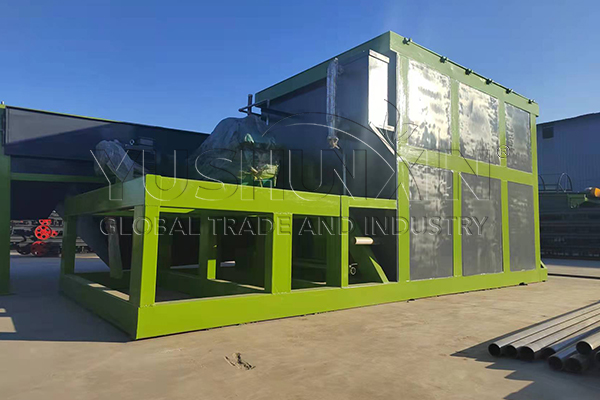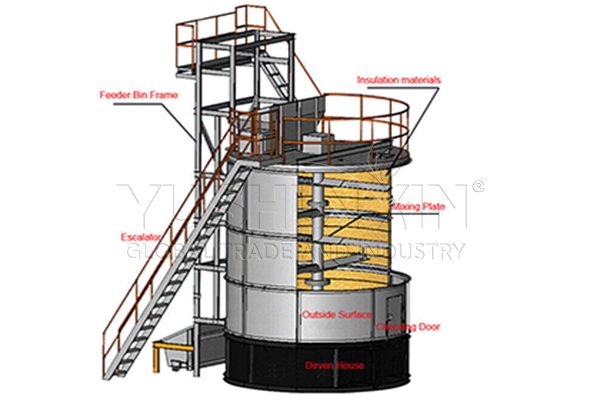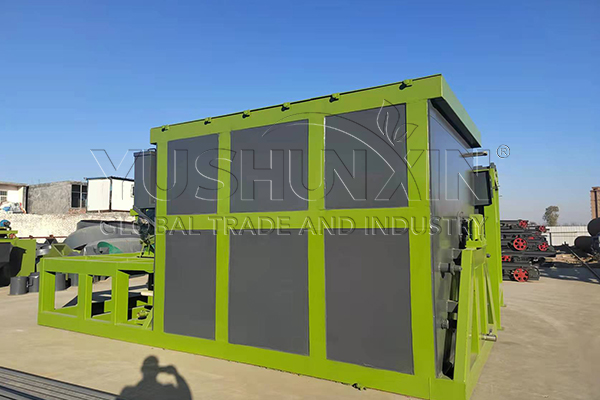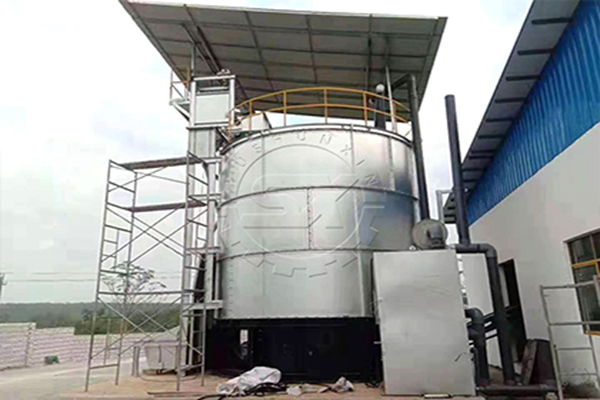Compost fermentation is the first step in biofertilizer production. So, it is important for you to choose the right biological fermentation equipment. Why not consider a biofertilizer fermenter? Fermenter for biofertilizer production adopts static aerobic fermentation method, covers a small area, little pollution, can completely kill disease eggs, fermentation effect is good. YUSHUNXIN has horizontal and vertical biofertilizer fermenters, you can choose according to the production needs, site area and price budget. So, if you are interested in purchasing, please contact us.
What composting method does the biofertilizer fermenter adopts?
Static aerobic composting is a composting method that uses oxygen, humidity and temperature to convert organic waste into organic microorganism fertilizer through the action of microorganisms. In the static aerobic composting process, organic waste (pig manure, chicken manure, cow manure, bacterial residue, Chinese medicine residue, crop straw) is in a well-ventilated container or equipment, through regular ventilation or oxygen supply system, to maintain sufficient oxygen in the pile.
Therefore, in an aerobic environment, the microorganisms in the bio fertilizer pile are able to decompose organic matter more efficiently, generate heat energy and facilitate the fermentation process of the pile.
How many types of Fermenters for biofertilizer production are YUSHUNXIN?
Microbial fertilizer fermenter is a specialized equipment for fermenting organic waste. Therefore, there are many types. YUSHUNXIN has two kinds of bio-fertilizer fermenters. One is a horizontal fermenter, the other is a vertical fermentation pot.
The horizontal fermenter
The horizontal fermentation cylinder is square in shape as a whole. It can compost biofertilizers up to 20m3 at one time, and usually has one or more agitators for mixing and aerating. So, it is a wise choice for breeding enterprises and ecological agriculture to realize the utilization of waste resources. And you can customize the biological fertilizer fermenter with a capacity of 5-50m3 according to your needs.
The vertical fermentation pot
The vertical biofertilizer fermentation pot is placed vertically and has a cylindrical or rectangular shape. It covers an area of small, pollution-free, can completely kill disease eggs. In the fermentation process, aeration, temperature control, stirring, deodorization automatic control. At the same time, it can handle more than 20m3 of bio fertilizer compost at one time, which is larger than the horizontal fermenter. YUSHUNXIN can customize different capacities of 5-150m3 according to your needs.
Composting temperature:
Biofertilizer compost fermentation requires a certain temperature to promote microbial growth and decomposition of organic matter. So, as organic waste ferments in the fermenter for biofertilizer production, the temperature sensor monitors the temperature inside the tank in real time.
You can also adjust the temperature by starting an industrial electric blanket (embedded in the two-layer tank wall) to ensure the optimal survival temperature for beneficial bacteria (60-70 ℃). At the same time, in the upper part of the fermenter, the heating unit will also heat the oxygen pressed into the tank to ensure that the fermentation pot has the right temperature.
Proper humidity:
Proper humidity can provide the moisture required for microbial growth and reproduction, and promote the degradation and transformation of organic material. But too high or too low humidity will affect the fermentation effect and quality of microbial fertilizer compost. When using a biofertilizer fermenter, you should take care to control the feed moisture between 50-60%. In this way, after the successful fermentation, the discharge humidity is about 30%.
Oxygen:
Ventilation can provide sufficient oxygen to facilitate the aerobic fermentation process in bio fertilizer compost. Because it can quickly and effectively degrade organic matter in organic waste and produce organic biofertilizers. The high-pressure Roots blower sends the heated oxygen into the tank to ensure that the aerobic bacteria have enough oxygen. Oxygen sensors monitor the oxygen concentration in the tank in real time.
Content


